How Do You Potty Train a Dachshund?
How do you potty train a Dachshund? Anyone familiar with the miniature version of tenacity on four short legs might answer, “good question.”
Dachshunds melt our hearts with their soulful eyes and adorable noses. They can also frustrate new owners to the extreme. It’s a match of wills.
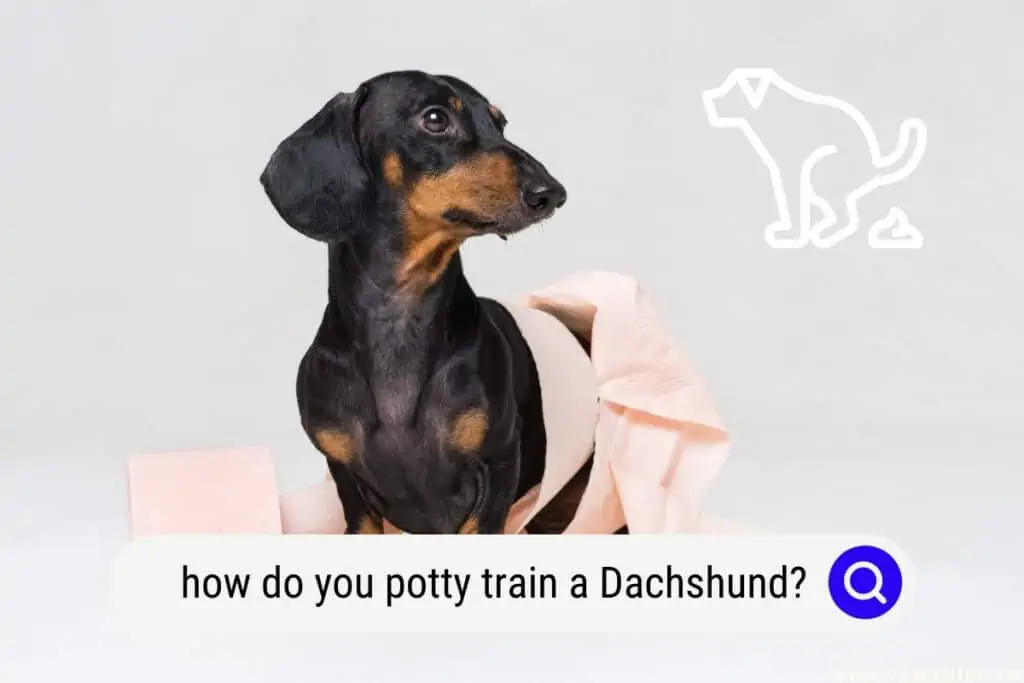
People fall in love with certain dog breeds for many good reasons. Their exquisite expressions resonate with something in our personality. Doxie parents learn to love these portable and brilliant dogs and suffer through the pitfalls.
Many dog behavior specialists get called in to help solve the Dachshund puppy potty myth, which is legendary and somewhat true.
Dachshunds can take longer to potty train. While there are always exceptions to the rule (to make us look bad), house training a Dachshund has its challenges.
However, that doesn’t mean it’s not doable.
Keys To Successful Potty Training
To solve a riddle, one must follow the clues. In this Dachshund potty training guide, one must understand the basics.
- Dachshund legacy and behavior
- Your ‘own’ habits
- Puppy proofing
- Interpreting potty clues
- Positive reinforcement
Dogs communicate with their behavior and signal us in many ways. It’s our responsibility to learn and interpret those signals.
As soon as that bundle of cuteness comes into our home, our responsibility to care for them starts. It’s not an eight-hour shift. The initial few weeks are a full-time job with few coffee breaks.
But the rewards of bonding with a dog are endless and worth the effort.
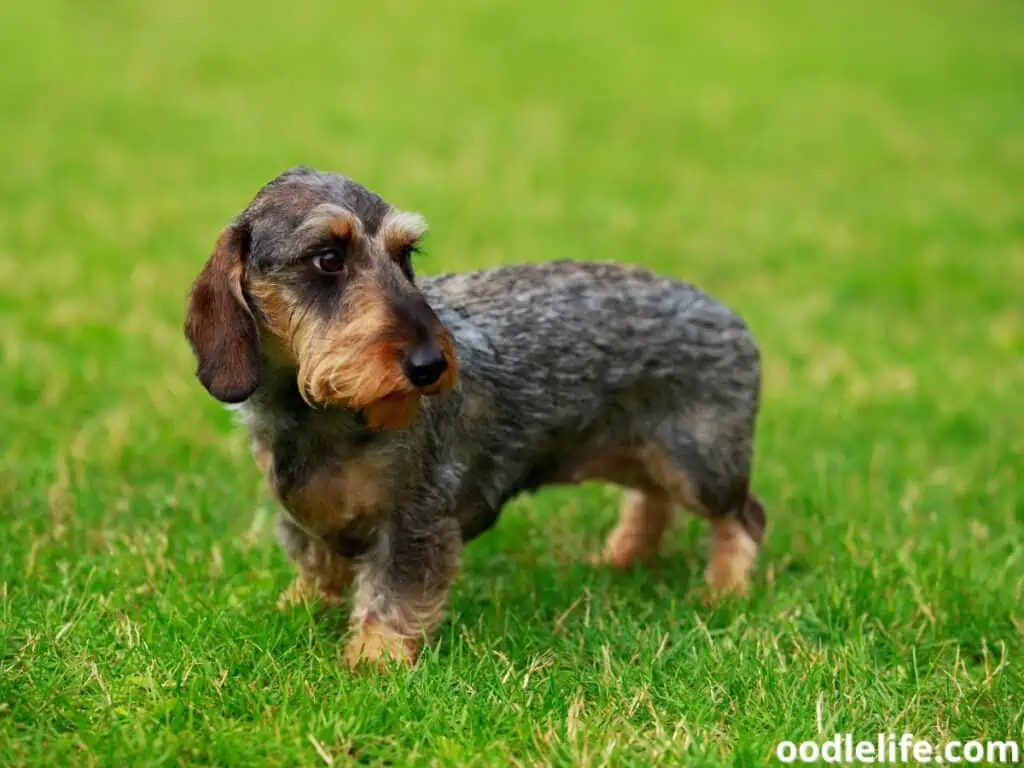
Understanding the Dachshund Breed
Hard to imagine, but Dachshunds weren’t bred for their cuteness factor. Doxies, Wiener Dogs, Sausage Dogs, and Dashies are expert scent hounds.
The German name Dachshund translates into Dachs, meaning badger, and Hund, meaning dog. Originally bred to hunt animals that hid in small dens and burrows, the Dachshund has uncanny tunneling skills and is associated with hunting rabbits, foxes, and even wild boars.
What emerged as a fact afterward is that they’re loyal, affectionate family and companion dogs. Dachshunds are perfect for single-family homes and can exhibit a jealous disposition if not corrected early.
A key personality trait that made Dachshunds formidable hunters also makes them stubborn and challenging to potty train. Doxies enjoy overindulging in food, treats, and snacks.
Highly intelligent, independent, and playful qualities make them mischievous. Don’t fall for those soul-seeking eyes. Be firm and consistent.
Don’t be surprised that your Doxie is digging in the garden or carpet. Their original purpose was to tunnel after small but ferocious animals. To break this habit, keep them busy and exercise them frequently.
When choosing to adopt a Dachshund, it’s vital to understand this brilliant and resourceful breed. Their stubbornness and tenacity make this breed good at what they’re bred to accomplish. Once Doxie parents understand that, a beautiful relationship forms.
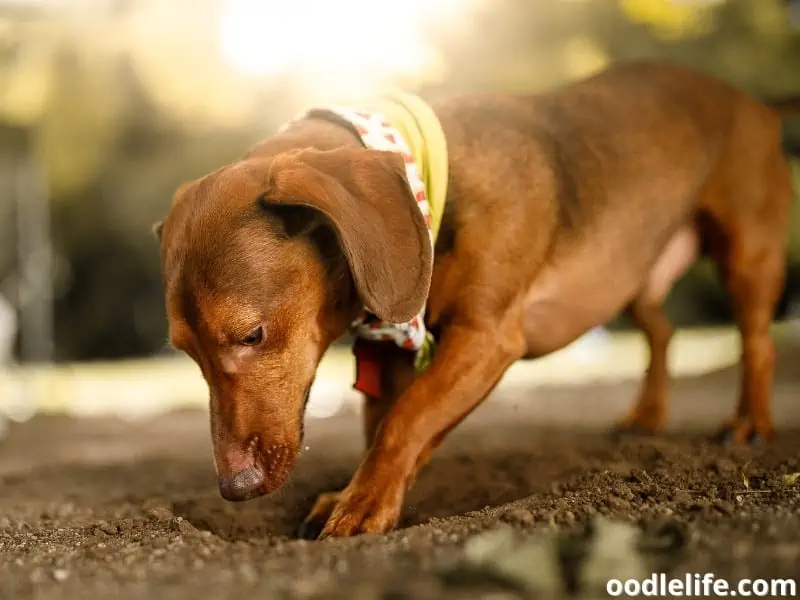
Tips for Dachshund Potty Training Success
Potty training is a learning process for you, your family, and your new pup. With patience, persistence, and team effort, your Dachshund will learn not to pee on your carpet.
Many people have wandered down this path before and shared their successful trial and error results to make potty-train your Dachshund easier.
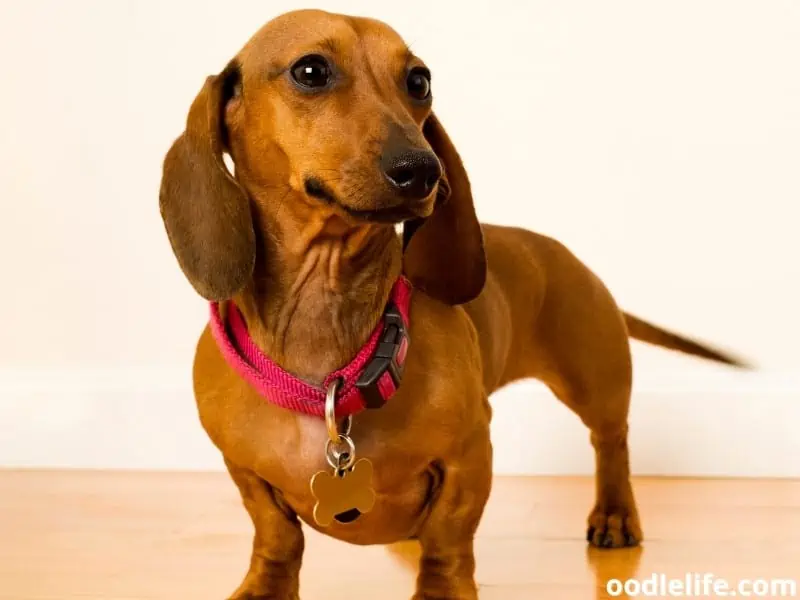
When Does Potty Training a Puppy Begin?
First and foremost, be prepared for the new arrival. Remove precious belongings and sequester a small space in your home as Doxie’s new den. Doggie gates are excellent ideas.
Potty training your Dachshund starts when you walk through the door with your new housepet. It’s good to stock up on paper towels and your favorite disinfectant spray.
Limiting your pet’s territory makes it easier to keep an eye on its behavior, and it doesn’t overwhelm your puppy or even mature guests.
Personally, paper or pad training isn’t my thing. Dogs are smart. If given the option, they prefer to do their business away from what they consider their den.
Crate training is a great tool to help your Doxie get comfortable and secure. They’re likely not going to mess up their bed unless it’s accidentally.
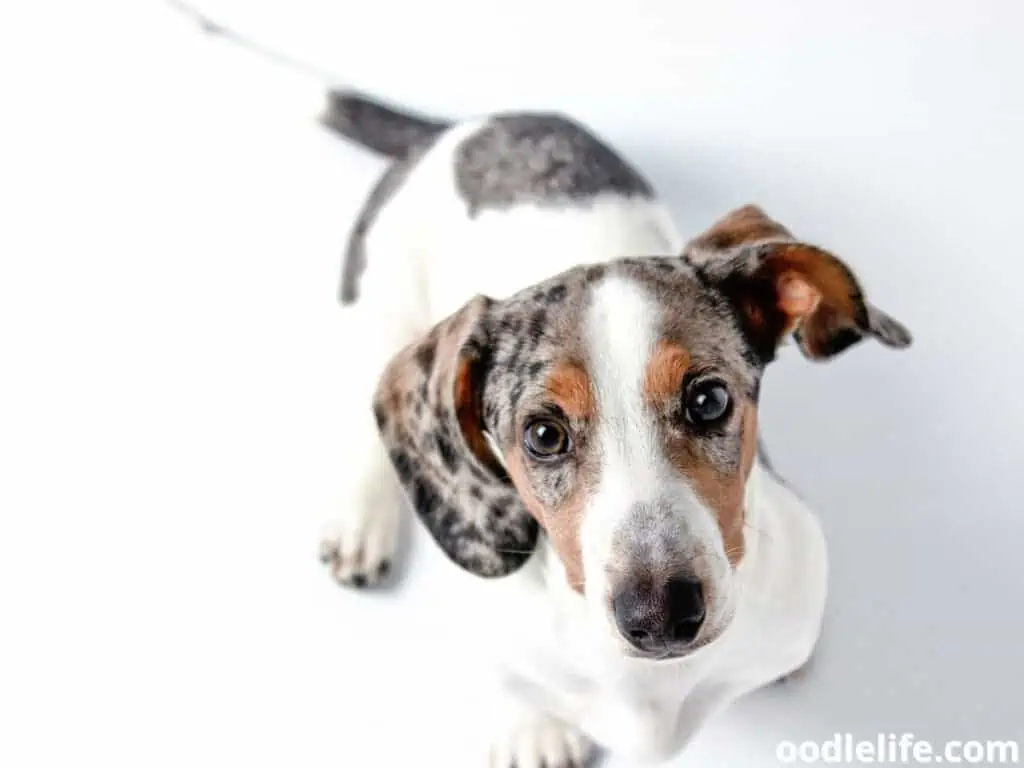
Frequent Potty Breaks
When you arrive home, allow your pup to get accustomed to the outside garden, terrace, or neighborhood park.
Once you bring your puppy into the confined space in your home, set a timer and take your pup outside every twenty to thirty minutes to avoid accidents.
Repeat those outdoor adventures until you and your pup establish firm communication signals. Slowly extend the intervals. While your dog is on the lawn, remain watchful and monitor if they pee or poo.
Establish a vernacular and use words like pee and poo.
Make sure you’re giving your Dachshund potty breaks frequently enough. Puppies have small bladders and may be overwhelmed by moving into a new home away from their siblings and mother. It’s not unlike bringing a baby home. You have to adapt your schedule to meet theirs.
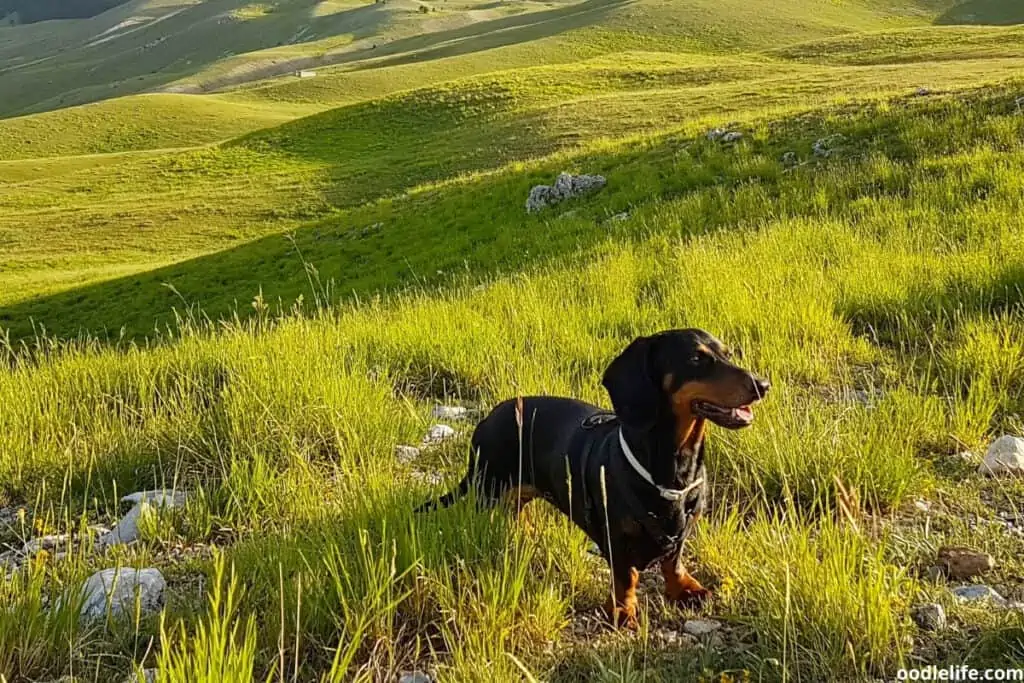
Puppy Week by Week Frequency Schedule
This is a rough guideline. Each puppy is unique. Feed on a schedule to allow healthy bowel habits to form. Always watch for potty signals, which can be confusing to you.
At 8 to 12 weeks old, a puppy has a small undeveloped bladder habit. Taking them outside several times every hour is a good starting point to avoid unnecessary accidents. Nighttime may require two to three forays into the dark.
At 12 to 14 weeks, decrease the frequency to every hour while still monitoring for signals—night routine of once per night.
At 14 to 16 weeks, reduce the schedule to every two hours. Taking your pup outside at bedtime shouldn’t require another outing.
At 16 to 18 weeks, maintain a routine potty schedule for three to four hours. Your pup should sleep through the night.
A consistent schedule should have your puppy fully potty trained by six months. A puppy’s bladder won’t fully develop until four to six months.
Don’t ever rub their nose in their accidents. It’s cruel and unsanitary and not necessary. Your dog will learn nothing from this outdated punishment.
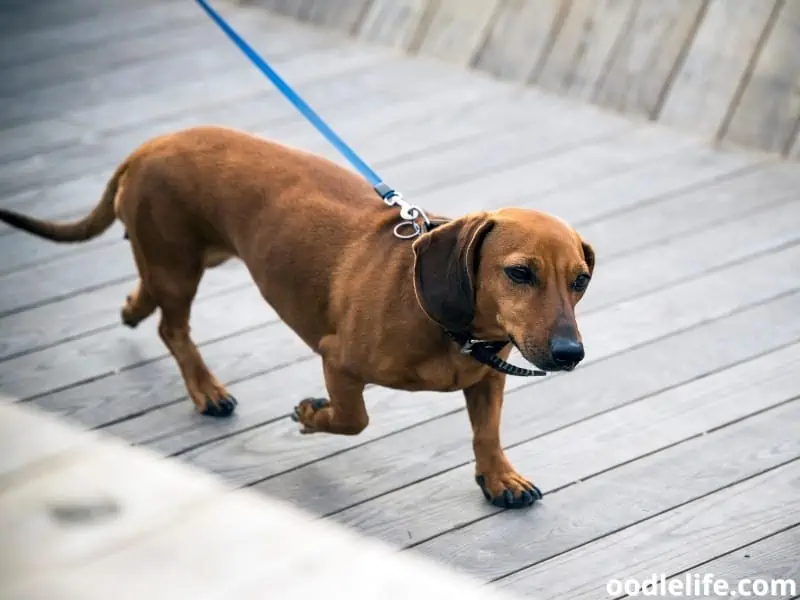
Learning To Identify the Signals
Dogs don’t do sign language the traditional way. They do offer us some telltale signs. To avoid accidents, learn to read those signals and rush your pet (without panic) outside.
Look for:
- Nose to the ground, sniffing with a pronounced intensity.
- Walking in circles (and sniffing).
- Lingering in areas of accidents (even if you disinfected, your dog chose that spot for a canine reason, not logic).
- Calm behavior changes into excitement for reasons unknown to you (running).
- Soft whimpering and increased nervous panting.
- Sitting calmly and staring near an exit.
- May vanish from the room if they have access (to do their business).
- Leaning against your leg and moving closer.
Of course, your unique puppy may send other signals. Learn to identify them. Also, remember that a pregnant Dachshund will have a different toilet schedule for those weeks.
People mistakenly believe that confining a puppy or dog is cruel. It isn’t. Domesticated dogs are den animals.
If a dog has pups in the wild, the mother will confine them to that space until it is safe.
Invest in the playpen if you can’t confine your puppy with a closed door or a dog kennel .
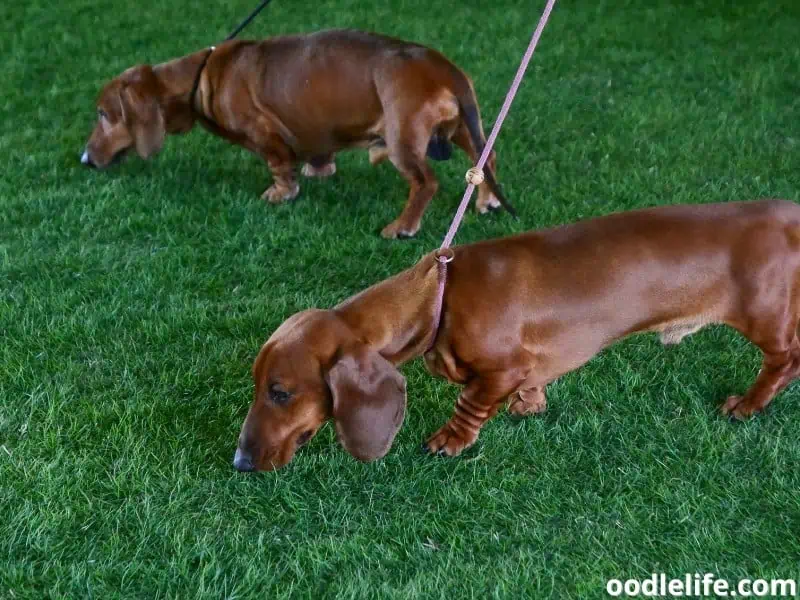
Morning and Night
Potty training is all about developing a routine for you and your pup. When your pup wakes in the morning, immediately guide them outside.
Some pup parents opt for carrying their dog to avoid accidents en route. Make sure you support their spine.
- Guide your pup to the place you want them to do their business.
- Wait patiently and don’t crowd their territory.
- Use the words pee, poo, and out to impart your command words.
- Potty time is not socializing or playtime.
- Encourage your dog to pee and poo, but don’t let them wander aimlessly for more than ten minutes.
- Reward them with a treat or praise for going to pee or poo (return to your home, this is not playtime).
Repeat this routine. Use an assertive but calm tone and reward your pup with affection for doing the right thing.
Tip: Don’t allow your pup full access. It will only lead to pee and poo accidents all over your home. It might even diminish your joy.
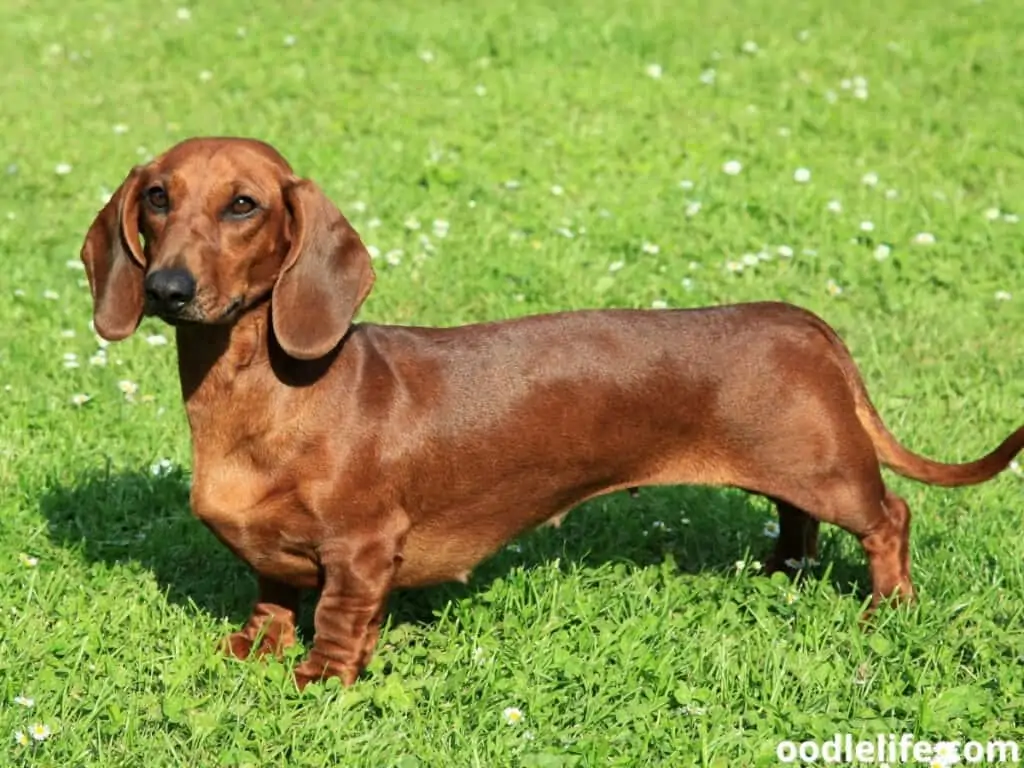
Paper and Pad Training
Everyone’s experience with paper and pad training is different. Sometimes smaller breeds conform very well to potty training on pads. There is a pad market for a reason.
However, watch this video on puppy pads if you want to watch a successful Dachshund trainer’s opinion.
A great way to avoid paper training is to schedule a puppy’s arrival for the warmer months. Dachshunds don’t like being cold.
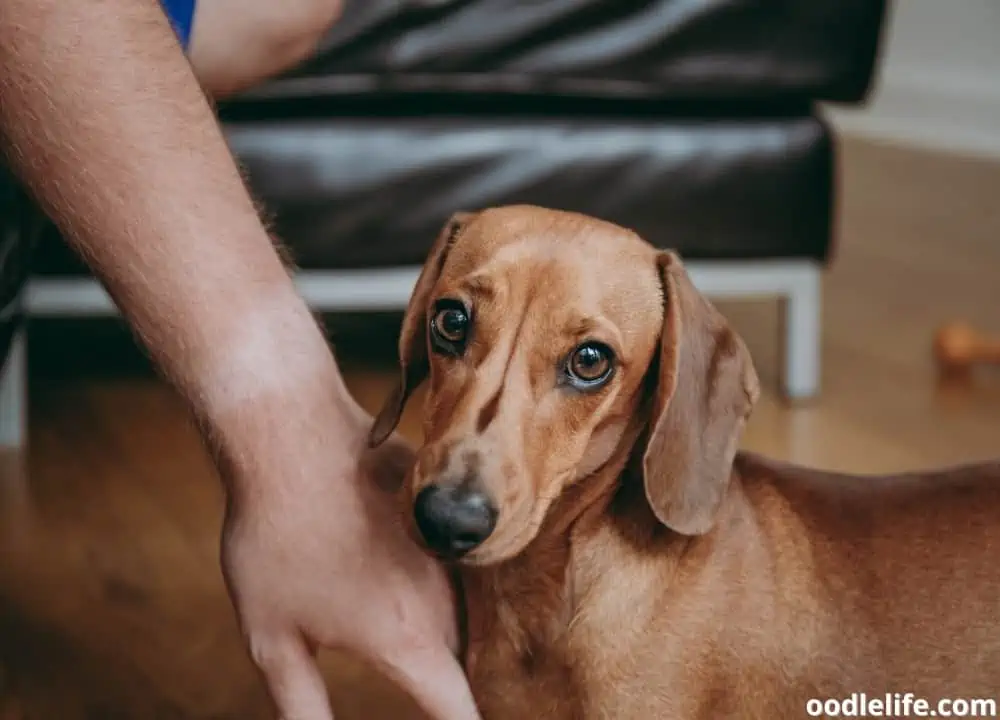
Conclusion
Dachshunds might be stubborn, but that doesn’t make them untrainable. Although there are countless tools on the market to help you potty train your Dachshund, what you really need to invest in is time, patience, persistence, and routine.